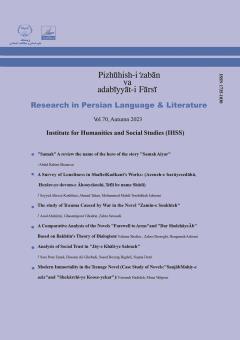Although, interpretation of the anecdotes has thousands – year history in the west and it is now considerable in the west literature, it has not been paid so much attention in Iran classic literature due to some reasons including their being profane. Along with the scat
More
Although, interpretation of the anecdotes has thousands – year history in the west and it is now considerable in the west literature, it has not been paid so much attention in Iran classic literature due to some reasons including their being profane. Along with the scattered and little interpretation by Sanaie, the poet of the 5th century, Sheikh Eshragh, the mystic and philosopher of the 6th century is the last person interpreted and reflected upon the Iran ancient myths. He wants to make a concrete link between three separate dimensions of Islamic culture, Iranian ancient wisdom and Creek philosophy. For he, as a believer Muslim, is familiar with Islamic culture and its components including mysticism in one hand and he is the heritance to the pre-Islamic period as Iranian generated one on the other hand and so can not ignore the Creek philosophy as the result of human valuable reason and wisdom. Souhravardi, with his especial perceptivity, has found that the three mentioned apparently opposing cultures essence is the same and in case of their unification and harmony, Men can have a great experience in Human development and leadership. This article tries to show this great genius attempts for linking the Human thinking follows reflected in his interpretation from the Rustam and Esfandiar Story, revealing and the reasons for such interpretation while showing the elements of the cultures said above. It is clear that during Souhravardi day, this story and Shahname stories were famous in such a way that,deconstructing them was not an easy task except for some specified reasons but, Sheikh Eshragh could do so by his special thought background and broke the structure of this story aimed at finding his views within the layers of it.
Manuscript profile


